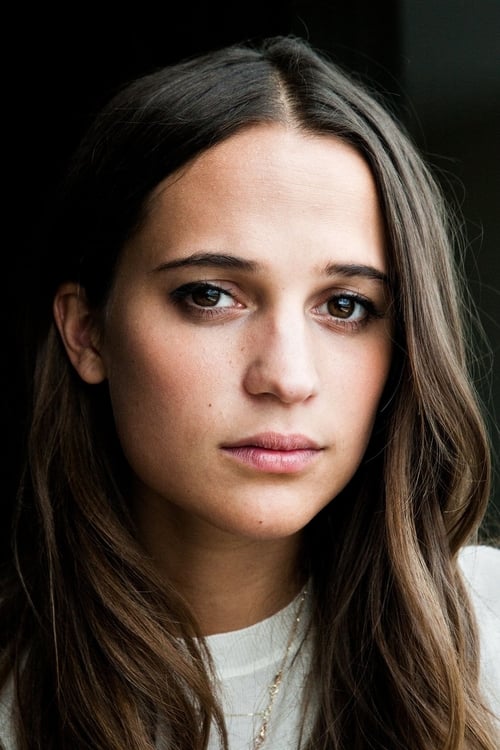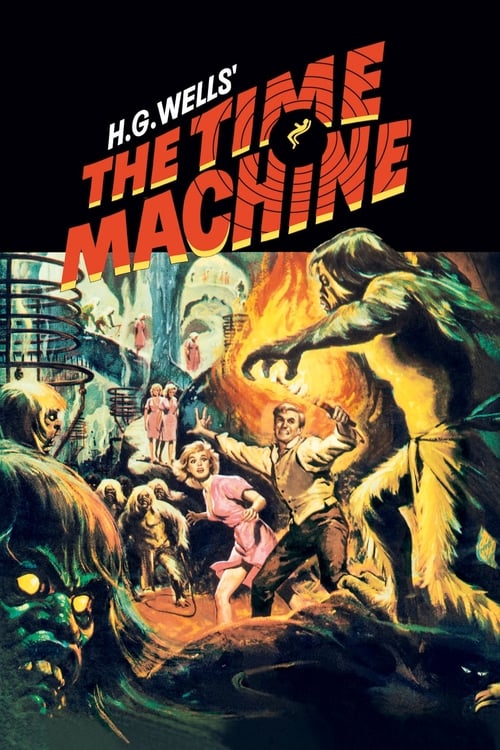
The Danish Girl
When Gerda Wegener asks her husband Einar to fill in as a portrait model, Einar discovers the person she's meant to be and begins living her life as Lili Elbe. Having realized her true self and with Gerda's love and support, Lili embarks on a groundbreaking journey as a transgender pioneer.
Dialogues from Movie The Danish Girl
Quotes from Movie The Danish Girl
Sound Tracks from The Danish Girl by Alexandre Desplat
The Danish Girl
The Danish Girl by Alexandre Desplat, Main theme throughout the film
My Friend, the Painter
My Friend, the Painter by Alexandre Desplat, Scene where Lili paints
Lili's Theme
Lili's Theme by Alexandre Desplat, Pivotal moments showcasing Lili's journey
Download App
Memorable Scenes from Movie The Danish Girl
Einar's Artistic Awakening
Einar Wegener, played by Eddie Redmayne, sits quietly in his studio as his wife, Gerda, requests him to pose as a female model for her painting. As she paints, Einar immerses himself in the role of Lilian, and the camera captures the transformation happening in his eyes—a flicker of joy and liberation amidst a life of pretense. This moment marks the birth of Einar's identity as Lili, igniting her journey towards self-discovery that will later unfold in the narrative.
Context: This scene takes place early in the movie, establishing the main character's inner conflict and foreshadowing their struggle with gender identity.
The First Time as Lili
In a dreamlike moment, Einar fully embraces his identity as Lili for the first time. Set against the serene backdrop of a park, he dons a dress and walks confidently, radiating happiness. The colors of the scene highlight his beauty and the freedom he feels. This pivotal moment encapsulates the essence of his struggle and the depths of his happiness as he steps into his true self.
Context: This scene marks a critical point where Einar begins to shed the constraints of his assigned gender, gently nudging the narrative toward the exploration of identity and acceptance.
The Confrontation with Gerda
As Gerda and Einar have a heartfelt conversation about Einar's emerging identity, emotions erupt. Gerda, expressing fear and confusion, asks Lili if Einar will disappear forever. The tension builds as Lili, wearing a vulnerable expression, responds, affirming the struggle for her identity while reassuring her of their love. This moment crystallizes the complexity of their relationship, showcasing the duality of love and identity.
Context: This conversation heightens emotional stakes as Gerda grapples with her husband's transformation yet attempts to support his journey, thus deepening the exploration of love and acceptance.
The Decision to Transition
In a dimly lit room, Lili sits quietly, contemplating the significance of her decision to undergo gender confirmation surgery. The weight of her choice is palpable in her somber expression. The dialogue, laced with uncertainty, questions the very fabric of her existence and identity. Lili’s calm acceptance of her path signifies the beginning of her transformation, underscoring the gravity of such decisions.
Context: This critical scene pushes the narrative forward, showcasing Lili's resolve as she evolves into her true self—an important moment that explores the complexity of identity and the courage it takes to live authentically.
The Surgery Scene
The mood becomes tense as Lili prepares for her surgery. The operatory lights illuminate her face, reflecting trepidation and hope. As she is prepped and anesthetized, the subtle yet powerful imagery softens the harsh realities of the medical procedure. Viewers witness the physical manifestation of Lili's inner battles, making it an emotionally charged moment that resonates with themes of sacrifice and rebirth.
Context: This scene represents a major turning point in Lili's journey, capturing the climactic moment of transformation, both physically and emotionally.
Gerda's Art Show
Gerda stands before a series of paintings, her artwork on display for the first time. When Lili enters, the atmosphere shifts, and Gerda’s delight transforms into anguish as she realizes what her art has truly represented. The emotional nuance unfolds as the audience sees how Gerda's art not only chronicled Lili's journey but also illustrated her intense struggle to accept Lili’s identity. It’s a moment of both pride and pain, highlighting their evolving relationship.
Context: This moment emphasizes the complexity of love amid transformation and further solidifies the theme of art as a powerful medium for self-expression and communication.
The Final Goodbye
In a poignant farewell scene, Gerda and Lili embrace for what they know may be the last time. Tears flow as they acknowledge the end of their romantic bond. The visual framing emphasizes their connection through the sorrowful yet accepting expressions. This farewell beautifully encapsulates the themes of loss and acceptance, as Gerda, with a broken heart, realizes Lili must embark on her journey alone.
Context: This emotionally charged moment serves as a climax in their relationship, heightening the narrative stakes as both characters evolve in their respective journeys.
Lili's Return to the Park
As Lili returns to the familiar park where she once embraced her identity, she reflects on her journey. The beauty of the park juxtaposed with her emotional turmoil creates a breathtaking scene. It's a moment of self-acceptance and reclaiming identity. With a serene smile, Lili realizes that she has finally found the courage to live her truth.
Context: This marks a moment of catharsis within the film, allowing audiences to witness the transformation's impact on Lili’s spirit and self-acceptance.
Lili’s Vulnerability
In a quiet moment, Lili confides her fears and doubts to a trusted friend. The emotional fortitude required to voice her inner turmoil showcases vulnerability. The shot lingers on Lili’s face, capturing the essence of her struggle—fear of rejection and desire for acceptance. This dialogue shapes viewers' understanding of the emotional impact of living authentically.
Context: This scene plays a crucial role in deepening the audience's empathy for Lili, shedding light on the challenges faced by those in the LGBTQ+ community.
Gerda's Realization
In a painfully heartfelt moment, Gerda acknowledges Lili's identity and her own grief when she sees Lili's happiness juxtaposed with her own sorrow. The poignant emotions depicted on both women's faces highlight the complexity of their love and the pain of letting go. This conversation leaves viewers pondering the nature of love and the sacrifices made for transition.
Context: This serves as a powerful moment of acceptance in both characters' arcs, underscoring the themes of love’s evolution amid personal change.
The Court Scene
In a tense courtroom, Lili stands before judges, asserting her identity. The gravity of the moment weighs heavily as she articulates the essence of her being. The tone is defiant yet vulnerable—this is her moment of truth. The scene encapsulates the legacy of struggle faced in self-identification, serving as a microcosm of societal challenges faced by the transgender community.
Context: This courtroom scene is pivotal, showcasing the conflict between personal identity versus societal acceptance as it highlights the legal hurdles encountered during Lili’s journey.
A Touch of Tenderness
Quietly brushing Lili’s hair, Gerda reflects on their life together. This intimate act carries layers of nostalgia and sorrow. The soft lighting and intimate framing create an emotional atmosphere as they sit in comfortable silence. This moment underlines the depth of their bond despite the transition in their relationship.
Context: The tenderness depicted signifies the complexity of love and partnership, reinforcing themes of acceptance and love amid personal change.
The Strength of Lili
In a defining moment, Lili boldly faces society, dressed elegantly yet defiantly. The camera pans her confident stride as she walks through life, met with mixed reactions from onlookers. This scene illustrates her courage and determination to embrace who she truly is amidst societal judgment.
Context: This scene showcases Lili's evolution—despite hardships, she stands tall, symbolizing resilience and self-acceptance, echoing the film's themes of fighting for one's identity.
Healing through Art
As Gerda paints Lili’s portrait one last time, the stroke of the brush carries emotional weight. It's both a celebration of Lili’s beauty and a farewell to the partnership they once had. The visual imagery and the silence reflect a poignant moment of healing through creativity, marking a chapter's end.
Context: This intimate portrayal of art represents the couple’s emotional journey, intertwining themes of love, loss, and acceptance through artistic expression.
The Letter
In a tearful moment, Lili sends a heartfelt letter to Gerda expressing her love and gratitude. The weight of the words resonates deeply as the audience witnesses her vulnerability and hope for Gerda’s happiness amidst their separation. This letter becomes a symbol of enduring love, despite the circumstances.
Context: This pivotal exchange emphasizes the pain of moving on while highlighting the strength of their bond, reinforcing the idea that love can transcend barriers.
The Last Breath
During Lili’s final moments, Gerda holds her hand, sharing a poignant silence filled with unspoken emotions. As the camera follows their hands, clasped together, the intimacy resonates with profound heartbreak. This scene encapsulates the essence of their journey together, highlighting themes of love, loss, and the inevitability of change.
Context: This moment serves as both a closure and a celebration of Lili’s life while cementing the bittersweet nature of their journey, resonating with the audience on a deeply emotional level.
Finding Lili
In a flashback, Gerda searches for Lili in the depths of her memory. The visuals fade in and out, creating an ethereal experience as Gerda navigates her past emotions. The delicate score complements the nostalgic feeling, showing Gerda's longing and love. This moment reinforces the bond they shared before the transition.
Context: This scene provides viewers with a glimpse into their shared history, emphasizing the emotional foundation of their connection before the complex changes.
Celebration of Identity
In an empowering scene, Lili embraces a group of individuals like her, showcasing a community of acceptance. Joyful laughter fills the air as she breaks free of societal constraints. The visuals capture diversity, unity, and shared experiences of identity, affirming that Lili’s story resonates beyond her personal struggles.
Context: This moment emphasizes themes of community, solidarity, and acceptance, uplifting the narrative while championing the importance of identity.
The Source of Inspiration
Gerda reflects on her journey as an artist, realizing that Lili has been her greatest muse. The emotional revelation dawns on her, accentuated by the quietude of their home. As she stares at her completed artwork, tears fill her eyes, acknowledging the duality of love and inspiration derived from pain. This scene emphasizes the intertwining of their identities.
Context: This moment allows viewers to grasp the profound impact Lili has had on Gerda's life and artistry, reinforcing how love fosters creativity even in struggle.
Embracing Authenticity
Lili stands in front of a mirror, studying her reflection. The image shimmering against the glass showcases both vulnerability and empowerment. She exhales deeply, conveying a release of fear and an acceptance of her identity. This pivotal moment encapsulates the culmination of Lili’s internal struggles, signifying a resolute acceptance of her true self.
Context: This scene emphasizes the theme of self-acceptance and authenticity, allowing audiences to connect with Lili's journey of courage and determination.
A Love Letter to the Past
Lili and Gerda share a nostalgic laugh, recalling memories of their early days. The warm lighting enhances their mood, weaving a sentimentality into the air. This moment showcases the tenderness of their relationship before the complexity of conflict encroaches. It serves as a loving reminder of what they once shared.
Context: This scene highlights the emotional weight of nostalgia, presenting the evolution of their love story amid transition while allowing viewers to appreciate their bond.
Reclaiming the Self
Lili takes her first steps post-surgery, unsteady but determined. The camera captures the emotional significance of this moment—a new beginning. Friends surround her, offering encouragement and love. The visuals signify triumph over fear and prejudice, embodying the strength of the human spirit in facing societal challenges.
Context: This scene underscores the central theme of resilience and the triumph that accompanies embracing one’s true self, resonating deeply with the audience.
Download App







